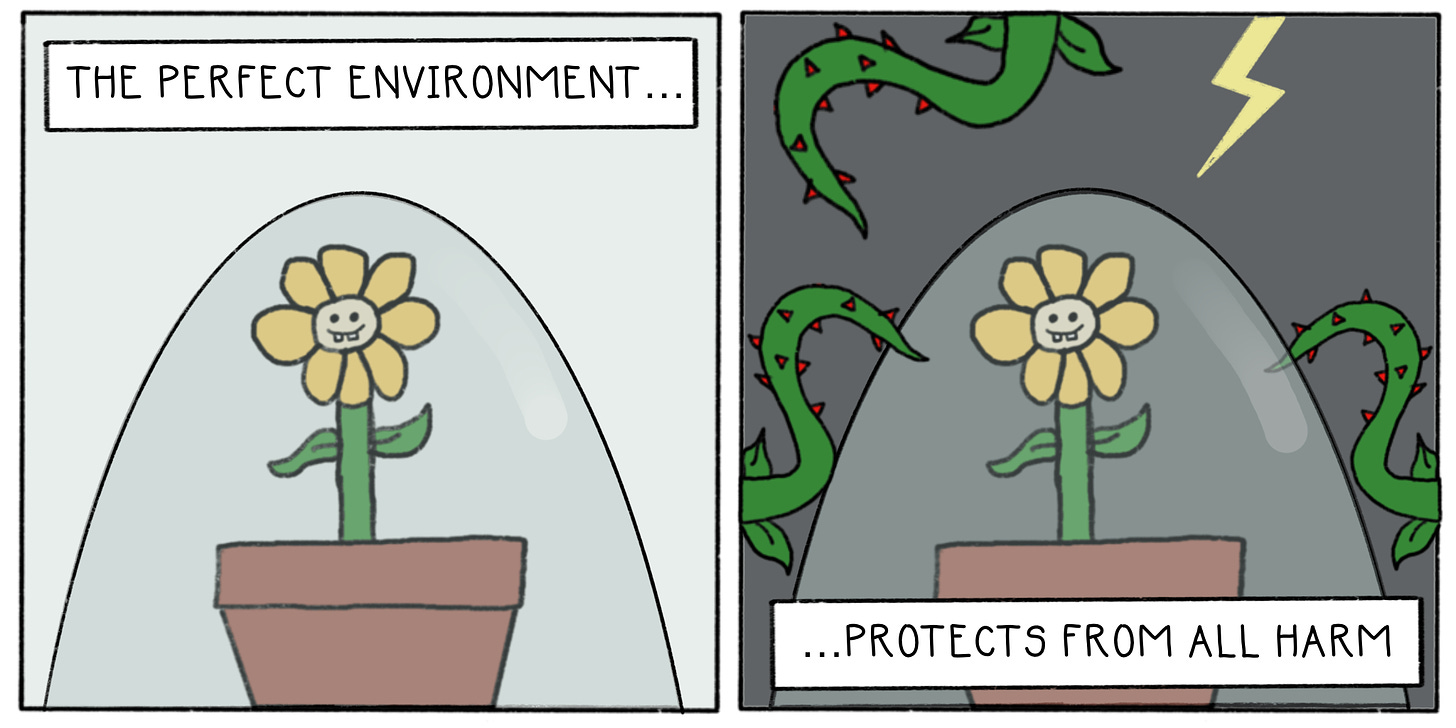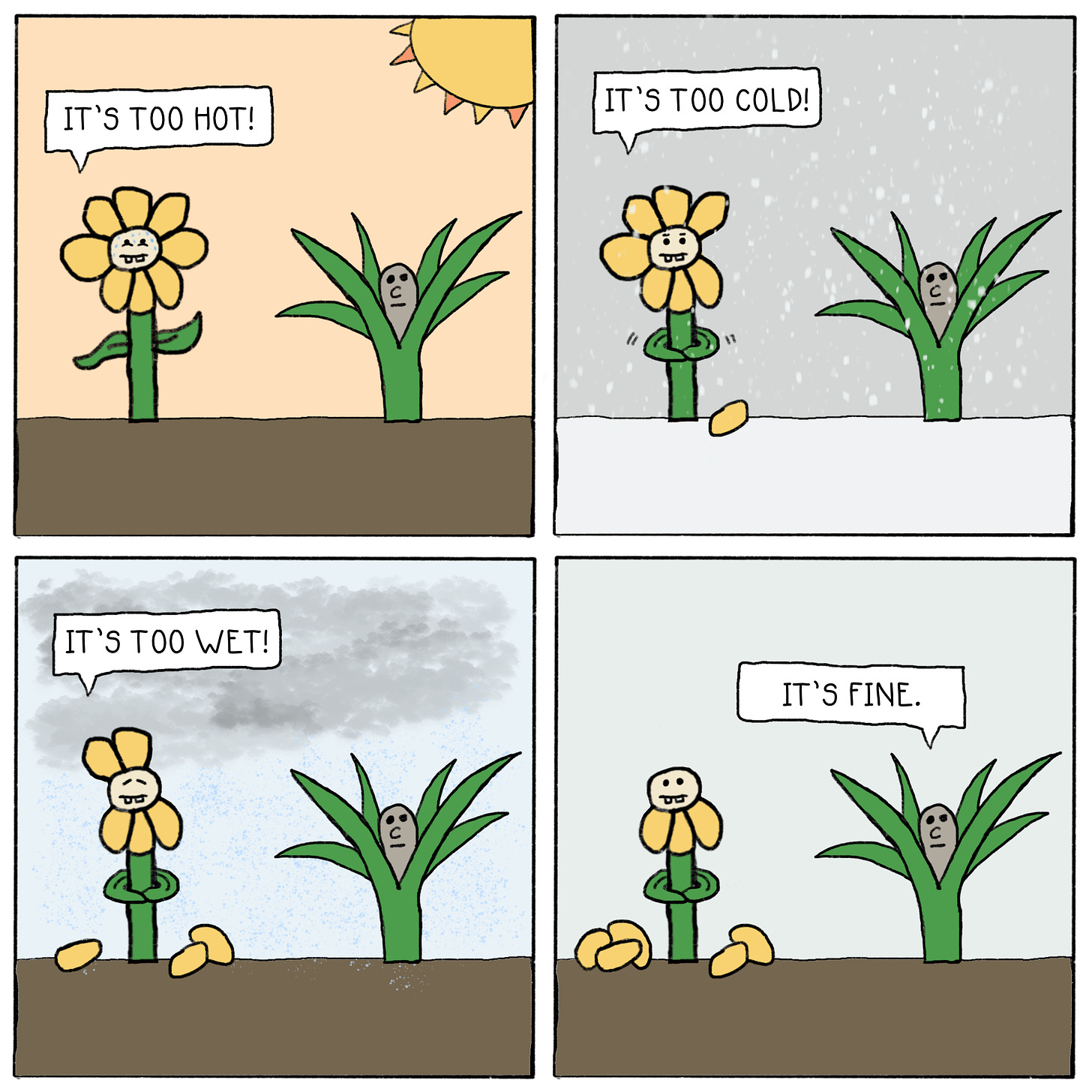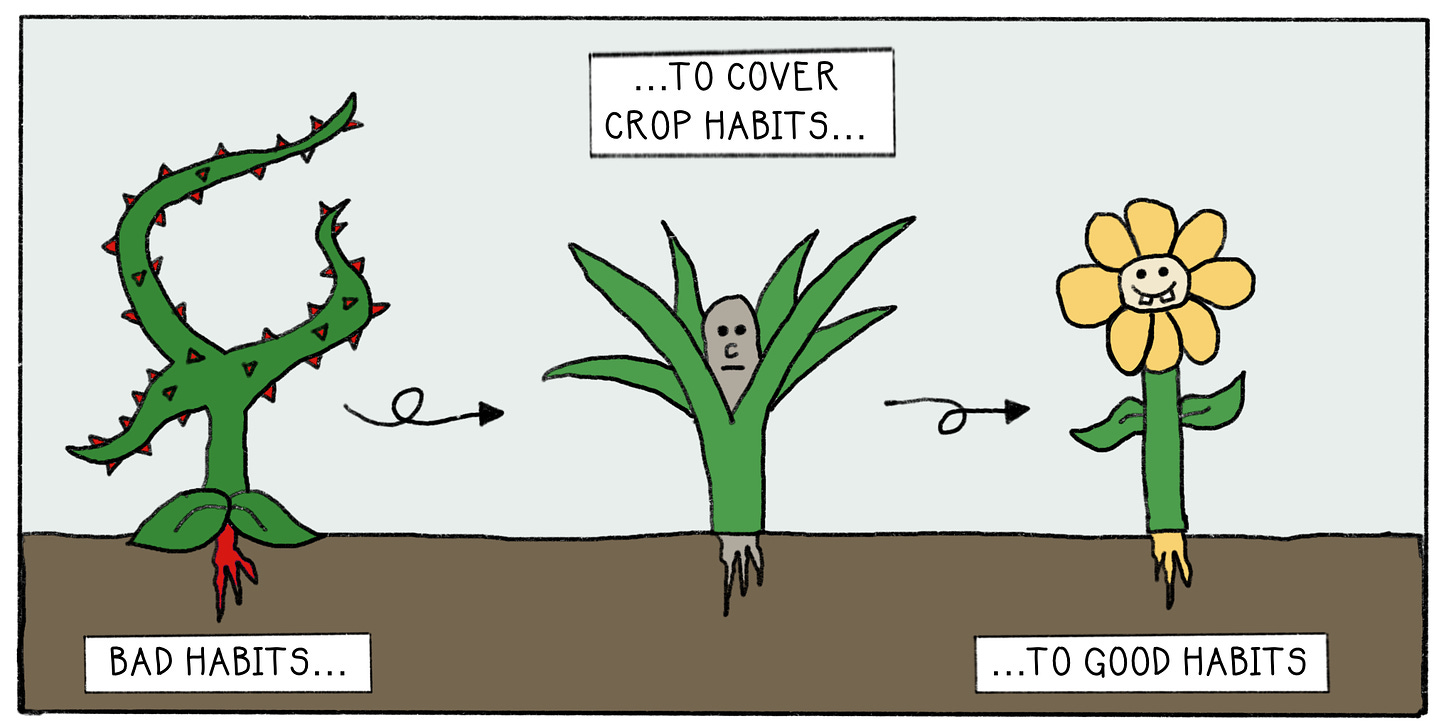08 February 2023
Cover Crops
February is the month when New Year’s Resolutions go to die. We might as well cancel that gym membership, pause our Duolingo subscription, and stop buying books.
I’m only half-joking. Chances are, we bit off more than we could chew in the new year, and now we’re facing the grim reality of our big eyes and small stomachs. But it’s okay to fail in February; we have time to course correct.
First, let’s understand why resolutions fail. To change, we must modify our identity and actions to reflect that new identity. James Clear talks about leveraging daily habits to “cast votes” for the type of person we want to be. A fit person doesn’t miss workouts, and that identity fuels a habit of regular exercise. We may have started the year with a week, maybe two, of daily gym exercises. But then, somewhere along the way, we missed a day, and our habit began to wilt.
New habits are fragile. Like plants, habits need consistent watering and sufficient time to develop durability. Insidious weeds of unchecked priorities and self-sabotage can choke them out.
A planter box is a reliable way to grow new plants, as we can control the environment—ensure the correct moisture levels, proper light exposure, and sufficient dirt quality. Letting plants take root in a safe ecosystem helps them become strong enough to survive when transplanted to unstable conditions.
Building habits is no different. We have more success sticking with a routine if we craft the right environment. Packing a gym bag the night before and pairing workouts with a new album are means to building a fitness ecosystem.

Increasing Yield
If a specialty plant fails, we could plant a cover crop.
Cover crops shield the soil of a garden; they’re not intended to harvest but provide value with their hardiness. Cover crops can grow in wicked environments, unlike finicky cash crops. The most successful habits are equally hardy and thrive in chaotic conditions. Rather than a fragile, hour-long gym habit, a 15-minute daily bodyweight workout is durable and easier to maintain.
Cover crops grow low and wide to cover a large area. Likewise, it’s more effective to create a small, daily habit than a medium habit that only occurs three days per week. When something doesn’t happen every day, it’s easier to procrastinate and push it to the elusive tomorrow. Habits are a game of tonnage, so the quantity of the habit is arguably more important than the quality.

Preventing Erosion
Small cover crop habits can prep us for future cash crop endeavors, so they’re effective for gaining traction on resolutions. But cover crops are also a remedy against bad habits.
A patch of dirt isn’t barren for long. If left unchecked, gangly weeds will conquer the soil, and erosion can desecrate the land’s productive capacity. Giving up on our resolutions—procrastinating our habit development—prevents us from changing into the person we wish to be. Giving up on reading because we can’t finish a book each week can allow weedy doom-scrolling to steal our attention. Giving up on fitness because we can’t visit the gym can erode physical health.
Cover crops prevent weeds and erosion by improving soil structure and infiltration. Cover crop habits give us a productive system, so we don’t slip into destructive patterns.
Moreso, cover crops can restore a damaged ecosystem. Let’s say we have a terrible habit of binge-watching TV. If we’ve developed this bad habit over months or years, our attention has likely eroded and doesn’t contain sufficient nutrients to perform the 360-degree pivot into an hour of daily reading.
We can leverage cover crops to transition a bad habit into a slightly better one. We could replace a TV binge with a podcast spree to give us the distraction we crave and break the TV habit. Any binge isn’t good, but this change is better than the current state, and that’s progress. Over time, we could reduce the length of podcast binges and transition to reading books.

What cover crop could you plant this week?
